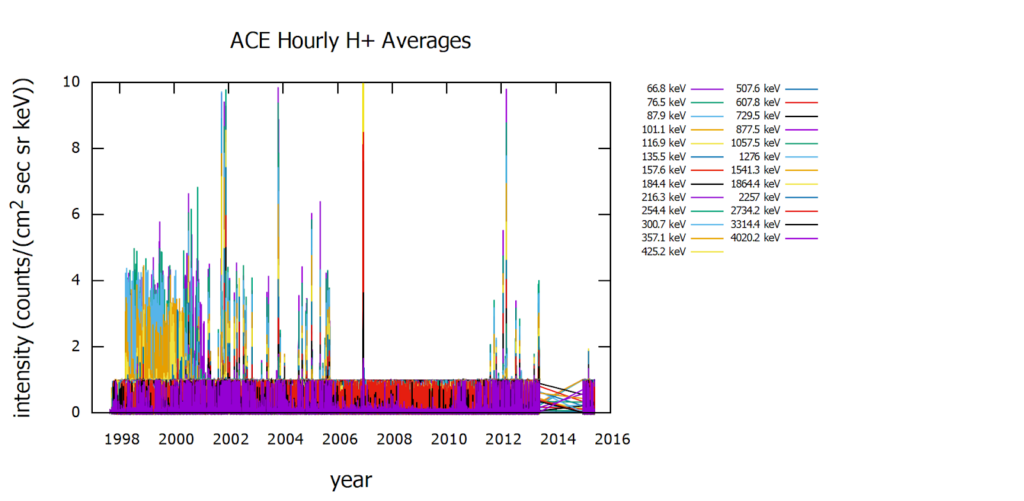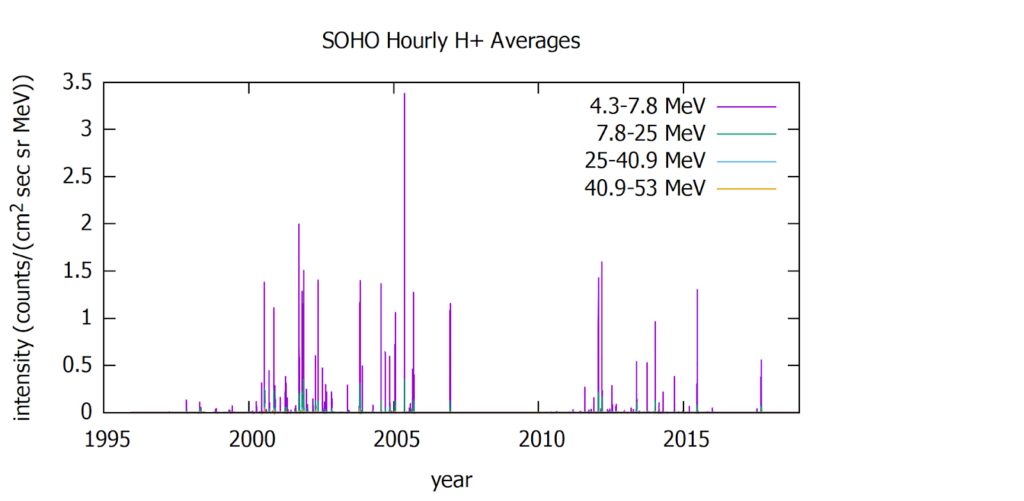The Earth’s magnetic field and atmosphere protect us from most of the harmful radiation in space, but this is not the case for interplanetary travel. The MISSFIT Radiation Group seeks to reduce the threat of radiation using a combination of both active and passive shielding. The active shielding consists of a magnetic field that reduces the energy of high-energy particles approaching the spacecraft. Lower-energy ions are trapped inside the bubbles and lose energy until they no longer pose a threat to the crew. The passive shielding consists of materials used in the hull of the spacecraft that will attenuate the effects of electromagnetic radiation, and our focus is on finding suitable materials that can then be tested by the Experimental group.
The other aim of the Radiation Group is to generate an accessible database for use in our Computational Group’s simulations. We have compiled data from NASA probes measuring interplanetary radiation, solar wind, galactic cosmic rays, and space dust. Data parsing is done in Python and data visualization is done in GNUPlot. The group’s current focus is on making the database accessible to the Computational Group for their simulations via a query system. The radiation group is maintained as a useful entry point for new students.
The Graphs below show radiation data from the SOHO and ACE satellites.


[1]Solar & Heliospheric Observatory Data Archive v2.14, EPHIN H+ and He+ , ESA and NASA collaboration, https://sohowww.nascom.nasa.gov/data/archive/index_ssa.html
[2] NASA, SOHO, Data Query System, https://sdac.virtualsolar.org/cgi/search
[3] NASA, ACE,EPAM,8/8/19,Cameron Crane, http://ace.ftecs.com/data.html
[4] NASA, ACE, CRIS, CalTech, http://www.srl.caltech.edu/ACE/CRIS_SIS/cris.html